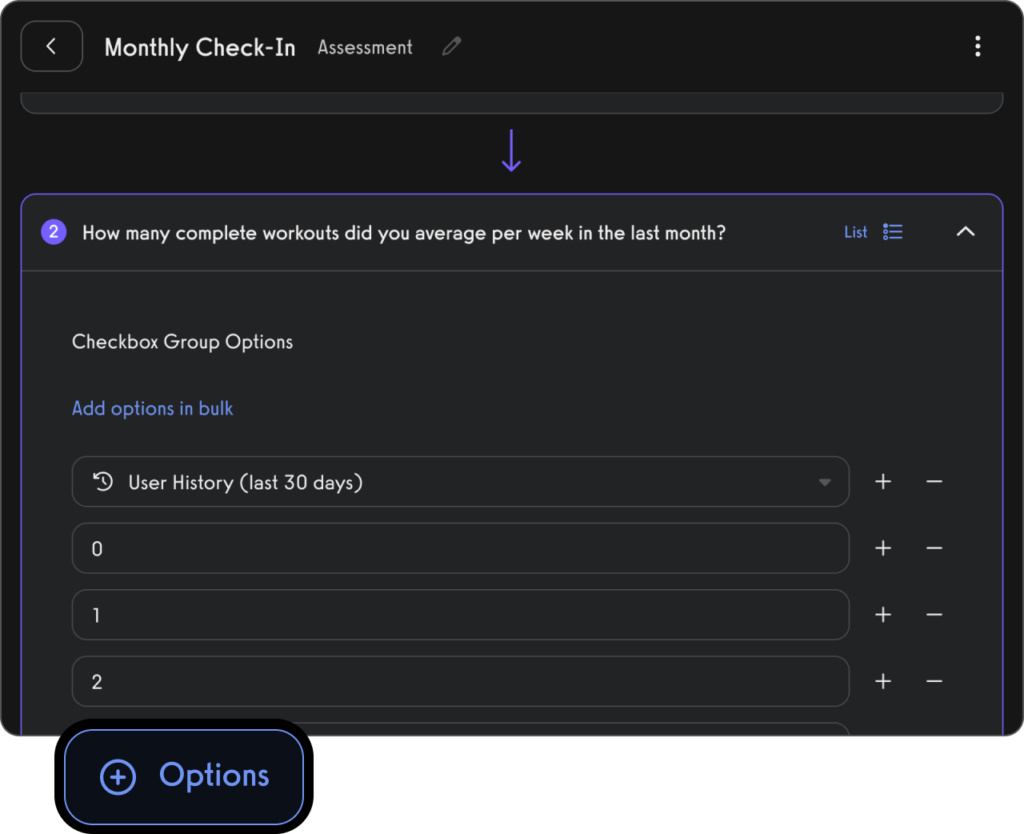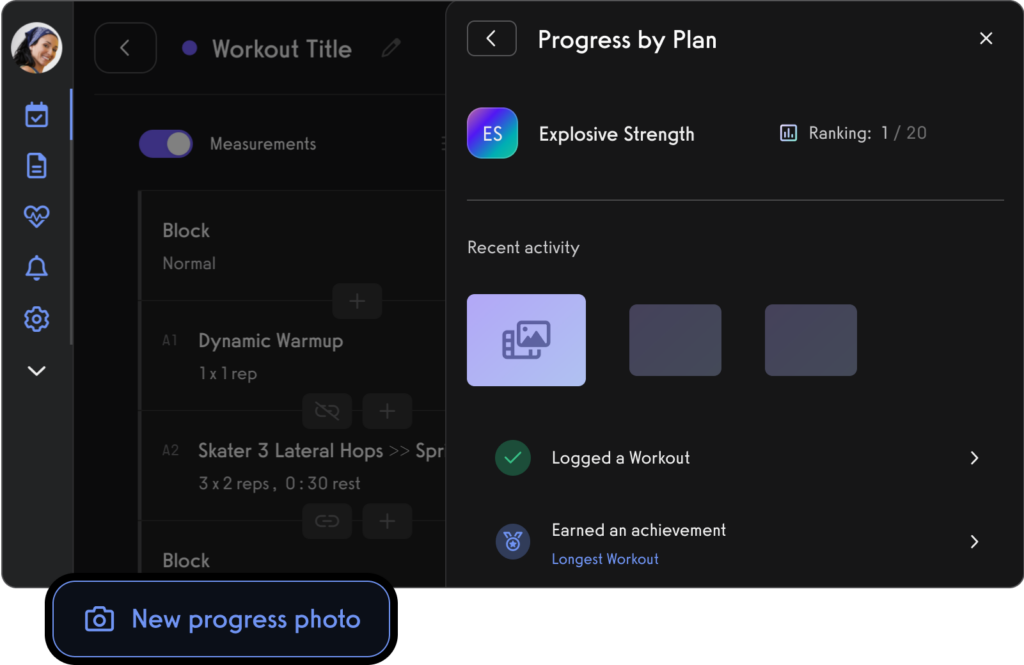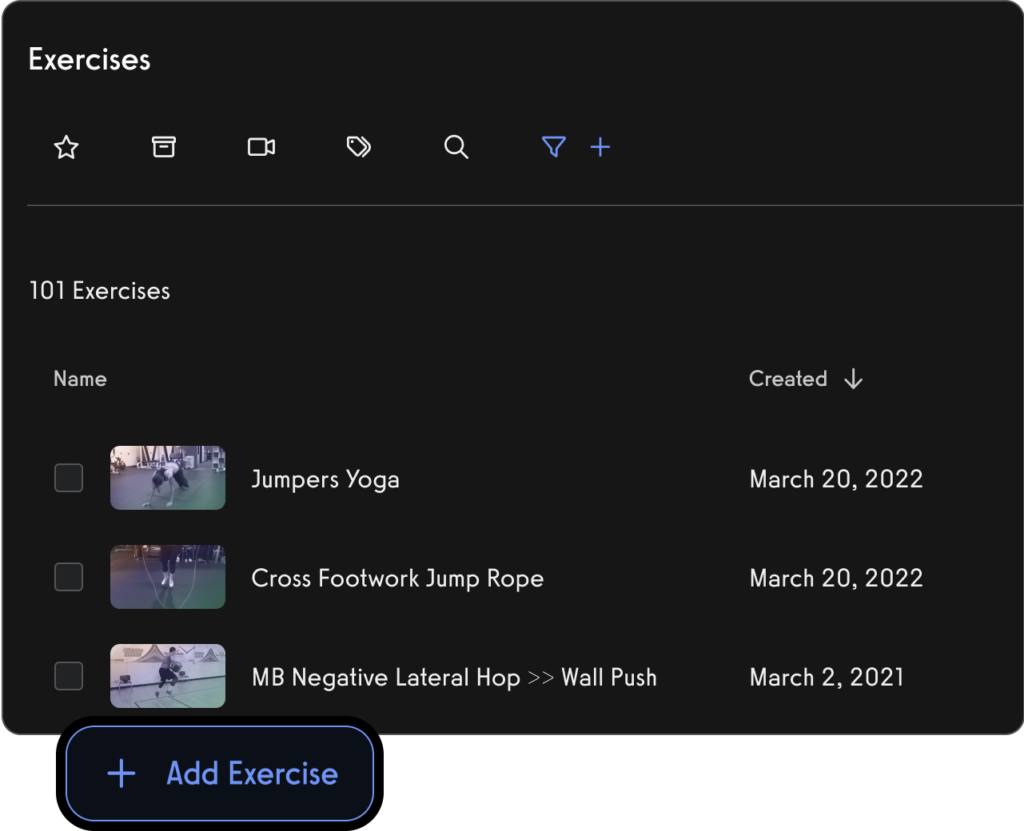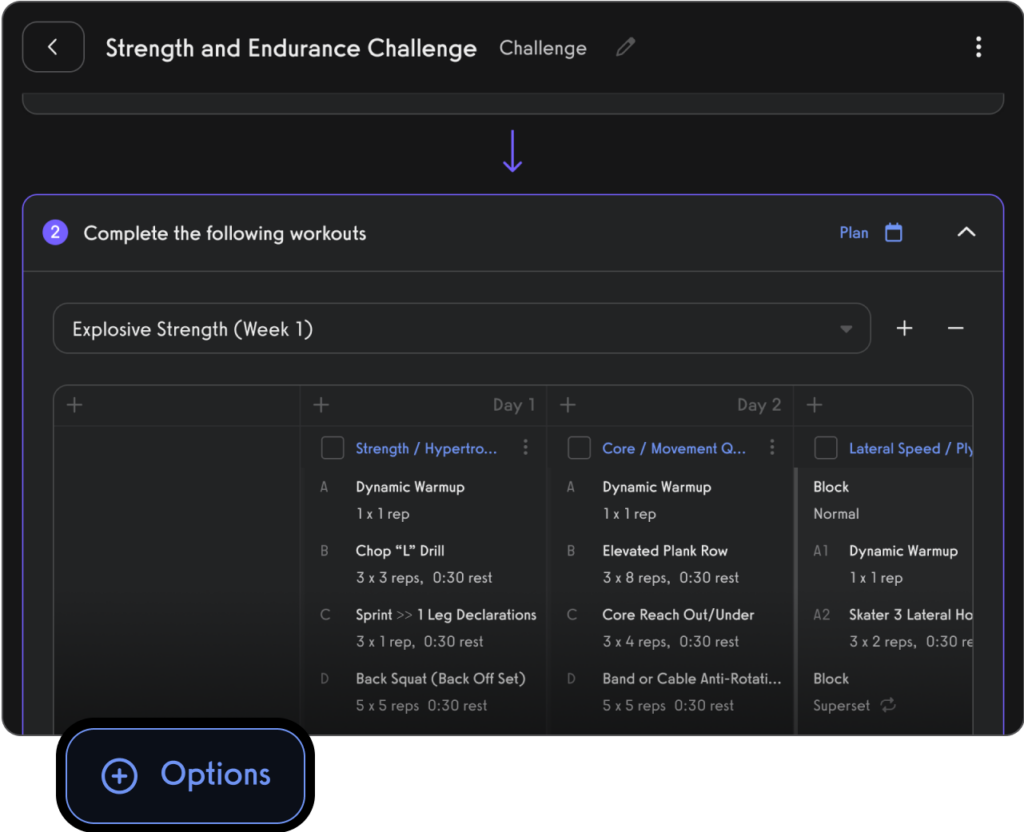How to Train Clients With Tuberculosis (Step-by-Step Guide)
Understanding how to train clients with tuberculosis (TB) can lead to a valuable expansion of your personal training clientele. But it’s essential to have the right tools and knowledge to train someone with TB effectively. Making use of specific personal training software features can assist in achieving this goal. Learn how to train clients with TB and what tools are needed in this detailed guide.
- Training clients with TB requires a careful and measured approach, focusing on exercises that improve overall strength and lung capacity without overexerting the client.
- Most clients with TB may benefit from gentle, gradual workouts that enhance their stamina and immune system, while keeping fatigue and stress levels low.
- The use of workout and assessment software can help ensure your client’s safety and support them in reaching their fitness goals with fewer disruptions.
Venturing into training special populations, like clients with TB, can provide personal trainers a rewarding way to diversify their business.
To train clients with TB, you need not only an understanding of the condition but also the necessary tools to deliver effective, accommodating training; that’s where personal training software steps in. By taking advantage of the features that top-quality online personal training software has to offer, you can train clients with TB in a way that works for them and supports their recovery.

To get the best personal training software from Exercise.com, book a demo now!
Understanding Tuberculosis and its Impact on Fitness Training
Tuberculosis (TB) is a contagious and potentially serious bacterial infection that primarily affects the lungs. While TB can greatly impact an individual’s health and well-being, it is important to recognize that exercise and fitness training can still play a valuable role in the management and recovery process. In this article, we will explore various aspects of training clients with tuberculosis, including understanding the disease’s impact on fitness, considerations for preparing and designing training programs, essential guidelines, assessing fitness levels, managing symptoms and side effects, incorporating breathing exercises, monitoring progress, collaborating with healthcare professionals, strategies to enhance adherence to exercise programs, building a supportive environment, educating clients, addressing common concerns and myths, and promoting health and well-being through exercise.
Tuberculosis is a bacterial infection caused by Mycobacterium tuberculosis. It primarily affects the lungs but can also impact other parts of the body, such as the kidneys, spine, and brain. Tuberculosis can cause a wide range of symptoms, including persistent cough, fever, night sweats, weight loss, fatigue, and chest pain. These symptoms can significantly affect an individual’s ability to engage in physical activity and exercise.
When training clients with tuberculosis, it is essential to consider the impact of the disease on their overall fitness levels. TB can lead to reduced lung capacity, muscular weakness, and decreased endurance. Furthermore, the necessary medications used to treat tuberculosis can also cause side effects like joint pain and muscle aches, further affecting exercise performance. Therefore, it is crucial to tailor training programs to the specific needs and limitations of individuals with tuberculosis.
It is important to note that individuals with tuberculosis should not engage in strenuous physical activity during the active phase of the disease. Rest and proper treatment are crucial for recovery and preventing the spread of the infection. Once the active phase is over and the individual has been deemed non-infectious, gradual reintroduction of exercise can be considered under the guidance of a healthcare professional.
Preparing for Training: Considerations for Clients with Tuberculosis
Before initiating any fitness training with clients who have tuberculosis, it is crucial to obtain clearance from their healthcare providers. Tuberculosis is a complex disease that requires careful monitoring, and collaborating with healthcare professionals is essential to ensure the safety and effectiveness of the training program.
Additionally, it is vital to consider the individual’s current health status and any existing co-morbidities or complications. Tuberculosis often affects individuals who may have compromised immune systems or other underlying health conditions, so modifying and adapting training plans according to their specific needs is crucial. Gathering a detailed medical history and conducting a thorough health assessment will help determine the appropriate starting point for their training program.
Furthermore, it is important to educate clients with tuberculosis about the potential risks and precautions associated with their training program. They should be informed about the importance of maintaining good hygiene practices, such as covering their mouth and nose when coughing or sneezing, to prevent the spread of the disease to others in the training environment.
In addition, it may be necessary to adjust the intensity and duration of the training sessions for clients with tuberculosis. Fatigue and shortness of breath are common symptoms of the disease, so it is crucial to monitor their energy levels and provide adequate rest periods during the workouts. Gradually increasing the intensity and duration of the exercises over time can help clients build their strength and endurance without overwhelming their bodies.
Designing a Safe and Effective Training Program for Clients with Tuberculosis
When designing a training program for clients with tuberculosis, it is crucial to prioritize safety, gradually progress the intensity and volume of exercises, and focus on improving overall fitness and well-being. The program should be individualized, taking into account the client’s specific limitations and goals while considering the potential challenges posed by tuberculosis.
Training sessions should include a mix of cardiovascular exercises, strength training, flexibility training, and breathing exercises. However, it is essential to start with low-intensity activities and gradually increase the workload to prevent overexertion and complications. Incorporating rest periods and allowing for adequate recovery is crucial, considering that individuals with tuberculosis may experience fatigue more quickly.
Furthermore, paying attention to proper form, technique, and breathing during exercises is fundamental. Emphasize the importance of maintaining good posture, using appropriate breathing patterns, and avoiding exercises or movements that can exacerbate the symptoms or strain the affected areas.
Essential Guidelines for Training Clients with Tuberculosis
When training clients with tuberculosis, several essential guidelines need to be followed:
– Encourage and educate clients on proper hygiene practices, such as covering their mouths and noses when coughing or sneezing, disposing of tissues properly, and regularly washing hands to prevent the spread of the infection.
– Ensure that training environments are clean and well-ventilated to minimize the risk of transmission.
– Regularly assess and monitor vital signs, including heart rate, blood pressure, and oxygen saturation levels, to ensure the client’s safety during exercise.
– Provide education on the importance of completing their tuberculosis treatment and the potential impact of the disease on exercise performance.
– Emphasize the significance of rest and recovery in managing fatigue and avoiding overexertion.
Assessing the Fitness Level of Clients with Tuberculosis
Assessing the fitness level of clients with tuberculosis is essential to develop an appropriate and individualized training program. Consideration should be given to the client’s overall health status, lung capacity, muscular strength, endurance levels, flexibility, and any limitations or restrictions imposed by the disease or its treatments.
Utilize various assessment tools, such as aerobic capacity tests, strength tests, range of motion assessments, and symptom questionnaires, to gather comprehensive data. Collaborating with healthcare professionals and specialists can provide valuable insights, ensuring a thorough and accurate assessment of the client’s fitness level.
Managing Symptoms and Side Effects during Training Sessions
Tuberculosis and its treatments can cause various symptoms and side effects that may affect exercise sessions. Fatigue, joint pain, muscle aches, and difficulty breathing are common challenges faced by individuals with tuberculosis during physical activity.
When managing symptoms during training, it is crucial to maintain open communication with clients, allowing them to express any discomfort or concerns. Make necessary adjustments to the training program, such as modifying exercises or providing additional rest periods, to ensure their safety and comfort. Encourage clients to listen to their bodies and modify the intensity or duration of exercises as needed.
Incorporating Breathing Exercises into the Training Routine for Tuberculosis Clients
Breathing exercises play a crucial role in the management of tuberculosis. These exercises can help improve lung capacity, enhance oxygenation, and promote relaxation. Incorporating specific breathing exercises into the training routine can be beneficial for clients with tuberculosis.
Deep breathing exercises, such as diaphragmatic breathing or pursed-lip breathing, can help individuals with tuberculosis control their breath, enhance lung function, and reduce feelings of breathlessness. Integrating these exercises at the beginning and end of each training session can help clients improve their breathing technique and overall respiratory fitness.
Monitoring Progress and Adjusting Training Intensity as Needed
Continuous monitoring of clients’ progress during training sessions is imperative. Regularly assess their overall fitness level, symptom severity, and treatment progression to adjust the training program accordingly.
Revisit the initial goals set for the training program and revise them as the client progresses. Gradually increase the intensity, duration, and complexity of exercises over time based on their tolerance and improvements.
Collaboration with healthcare professionals to ensure regular check-ups and assessments will provide a comprehensive view of the client’s progress, enabling you to make informed decisions regarding training adjustments.
Collaborating with Healthcare Professionals to Optimize Training for Tuberculosis Clients
Collaborating with healthcare professionals, including physicians, pulmonologists, and infectious disease specialists, is crucial when training clients with tuberculosis. These professionals can provide valuable insights into the client’s medical history, ongoing treatment, and any specific recommendations.
Regular communication with the client’s healthcare team will allow you to adjust training programs based on the progress or changes in their medical condition. Additionally, healthcare professionals can provide guidance on specific precautions, medication side effects, and potential exercise modifications to maximize safety and effectiveness.
Strategies to Enhance Adherence to Exercise Programs in Tuberculosis Clients
Adherence to exercise programs is paramount for clients with tuberculosis to reap the benefits of training. Unfortunately, adherence can be challenging, especially considering the impact of the disease and its treatments on energy levels and motivation. Implementing strategies to enhance adherence can greatly improve the success of the training program.
– Establish a trusting and supportive relationship with clients, creating an environment where they feel comfortable discussing concerns or challenges they may encounter.
– Encourage goal setting and provide ongoing motivation to keep clients engaged and focused on their progress.
– Incorporate enjoyable and varied exercises to maintain interest and prevent boredom.
– Educate clients on the benefits of exercise in managing tuberculosis symptoms and improving overall well-being.
– Provide clear and realistic expectations, emphasizing that progress may be gradual, and setbacks may occur.
– Foster a sense of community and support by involving clients in group activities or connecting them with peers who are also managing tuberculosis through exercise.
Building a Supportive Environment for Clients with Tuberculosis during Training
Creating a supportive environment is essential for clients with tuberculosis during training sessions. By fostering a positive and inclusive atmosphere, you can help alleviate any anxieties or concerns they may have.
– Educate other fitness professionals and staff members about tuberculosis, its impact on exercise, and the importance of empathy, patience, and understanding.
– Modify exercises or provide alternatives when necessary to accommodate individual limitations or symptoms.
– Encourage clients to share their experiences and offer a safe space for them to express any challenges or frustrations they may encounter.
Educating Clients about Tuberculosis and its Impact on Exercise Performance
Providing education to clients about tuberculosis and its impact on exercise performance is crucial. Many individuals may not fully understand the disease or how it can affect their ability to engage in physical activity. By educating clients, you can empower them to make informed decisions and actively participate in their recovery process.
Explain how tuberculosis affects the body, including its impact on lung function, muscular strength, endurance, and overall fatigue levels. Help clients understand the importance of balancing exercise with rest and recovery, and emphasize the role of exercise in managing symptoms and improving overall well-being.
Addressing Common Concerns and Myths about Exercising with Tuberculosis
There are often common concerns and myths surrounding exercise and tuberculosis. Addressing these concerns and debunking myths is vital to ensure clients feel confident and supported in their training journey.
– Myth: “Exercise will make tuberculosis worse.” In reality, when properly prescribed and supervised, exercise can have numerous benefits for individuals with tuberculosis, including improved cardiovascular fitness, enhanced lung function, increased strength and endurance, and enhanced overall well-being.
– Myth: “It is not safe to exercise in public or shared spaces.” While it is important to exercise in a clean and well-ventilated environment, tuberculosis is primarily spread through respiratory droplets and is less likely to be transmitted through sweat or direct contact. By following proper hygiene practices and training in properly maintained facilities, the risk of transmission can be minimized.
– Myth: “Exercise should be avoided completely.” Although it is important to consider an individual’s specific health condition and limitations, complete avoidance of exercise is generally not recommended. Exercise, when appropriately modified and prescribed, can play a crucial role in managing symptoms, improving overall well-being, and supporting the recovery process.
Promoting Health and Well-being through Exercise for Tuberculosis Clients
Engaging in regular physical activity and exercise is essential for individuals with tuberculosis to promote overall health and well-being. While the unique challenges posed by the disease must be considered, exercise, when appropriately prescribed and supervised, can have numerous benefits that extend beyond physical fitness.
– Improved lung function and respiratory efficiency, allowing for enhanced oxygenation and reduced breathlessness
– Increased cardiovascular fitness and endurance, enabling individuals to perform daily activities with greater ease
– Strengthened muscles and improved flexibility, leading to better physical function and reduced risk of falls or injuries
– Enhanced mood and mental well-being, as exercise has been shown to reduce symptoms of depression and anxiety
– Improved immune function, which is especially important for individuals with compromised immune systems
By recognizing the unique needs and abilities of clients with tuberculosis and tailoring training programs accordingly, you have an opportunity to contribute significantly to their journey towards optimal health and well-being.
What exercises are good for tuberculosis patients?
For tuberculosis (TB) patients, light to moderate exercises that do not put excessive strain on the respiratory system are generally recommended. Gentle aerobic exercises like walking, stationary cycling, or low-impact exercises can help improve overall fitness and maintain muscle strength. Breathing exercises and deep breathing techniques may also be beneficial to support lung function.
What precautions should be taken for a client with TB?
When working with a client with TB, it’s important to follow infection control measures to prevent the spread of the disease. This includes:
- Wearing protective gear: Healthcare providers should wear appropriate personal protective equipment (PPE) such as masks and gloves when in close contact with the client.
- Ensuring proper ventilation: Encouraging good airflow and ventilation in the training area can help minimize the concentration of infectious particles.
- Practicing good hygiene: Regular handwashing with soap and water or using alcohol-based hand sanitizers is essential. Covering the mouth and nose with a tissue or elbow when coughing or sneezing can help prevent the spread of droplets.
- Isolation: TB patients may need to be isolated during the contagious phase of the disease to prevent transmission to others. Following the guidelines of healthcare professionals is crucial.
What are the do’s and don’ts of tuberculosis?
Do’s for tuberculosis include:
- Seeking medical care: Consult a healthcare professional promptly if experiencing symptoms suggestive of TB, such as persistent cough, fever, weight loss, and fatigue.
- Completing treatment: Follow the prescribed treatment plan and complete the full course of medication as directed by healthcare providers.
- Practicing good respiratory hygiene: Cover the mouth and nose with a tissue or elbow when coughing or sneezing, and dispose of used tissues properly.
Don’ts for tuberculosis include:
- Neglecting symptoms: Ignoring persistent symptoms and delaying seeking medical care can lead to complications and increased transmission risk.
- Stopping treatment prematurely: Discontinuing treatment before completing the prescribed duration can contribute to drug resistance and recurrence of the disease.
What is the lifestyle advice for tuberculosis?
Lifestyle advice for tuberculosis includes:
- Taking prescribed medications: Adhering to the prescribed medication regimen is crucial for effective treatment and recovery. It’s important to follow the dosage instructions and take medications at the recommended times.
- Maintaining good nutrition: Eating a balanced diet that includes a variety of nutrient-dense foods can help support the immune system and overall health during the recovery process.
- Rest and recovery: Allowing adequate rest and minimizing physical and mental stress can aid in the recovery process and support the body’s healing mechanisms.
- Avoiding alcohol and tobacco: It is advisable to avoid alcohol consumption and tobacco use as they can compromise the immune system and overall health.
Is it safe to be around someone with TB?
Being around someone with TB does carry a risk of transmission, especially during the contagious phase of the disease. TB is primarily spread through the air when an infected individual coughs, sneezes, or speaks. However, the risk can be significantly reduced by taking appropriate precautions, such as wearing masks, practicing good respiratory hygiene, ensuring proper ventilation, and following infection control measures. It is important to consult with healthcare professionals or local public health authorities for specific guidelines and recommendations regarding contact with individuals with TB.
Use the Best Personal Training Software to Offer a Stellar Client Experience
Training clients with back pain requires a comprehensive and tailored approach. See how Exercise.com can help.

To learn more about how Exercise.com can help you run your fitness business, book a demo now!
Creating Training Plans for Clients with Tuberculosis
Here’s how you can help your clients accomplish their training goals by using workout plan creator software to create workout plans, run fitness challenges, offer online workout groups, message clients, and more, all from your very own custom branded fitness apps.
Exercise.com stands out as an all-in-one fitness business management software with comprehensive workout plan sales capabilities. The robust member management, billing & invoicing, and unique fitness assessment tools offer a one-stop solution for fitness business needs. Here’s just some of what you can do with the Exercise.com platform:
Engage with clients via automations.

Manage leads with a fitness CRM.

Create and send fitness assessments with ease.

Use fitness habit tracking to inspire and motivate personal training clients (in-person and remote).

Use fitness progress photos to engage with clients.

Use fitness leaderboards to track performance and inspire healthy competition.

Use the exercise demonstration video library or create your own custom exercise demonstration videos.

Create workout plans for parents and dependents, teams and more.

Manage personal training clients with ease.

Book appointments for clients (Read More: Best Gym Booking Software)

Create classes and fitness groups

Manage fitness challenges (Read More: 100+ Fitness Challenge Ideas)

Process payments for open gym, classes, and personal training.

Communicate with gym members, athletes, team members, personal training clients, class members, parents, and dependents via SMS, email, and in-app push notification.

View performance over time, track personal records, and other fitness stats with performance reporting dashboards.

And of course, view all of your fitness business reports easily too.

All from your custom-branded fitness apps (Read More: Best Gym Mobile Fitness Apps Software)


Want to learn how your fitness business can take it to the next level? Get a demo now!
References:
[1] World Health Organization. (2021, October 13). Tuberculosis (TB). https://www.who.int/news-room/fact-sheets/detail/tuberculosis
[2] Mase, S. R., Ramsay, A., Ngong, L., Henry, M., Hopewell, P. C., & Cunningham, J. (2013). Yield of serial sputum specimen examinations in the diagnosis of pulmonary tuberculosis: a systematic review. The international journal of tuberculosis and lung disease, 17(1), 44-52.









